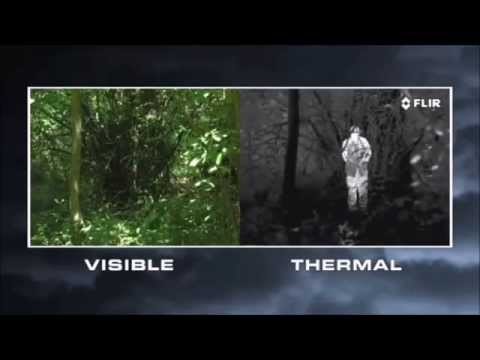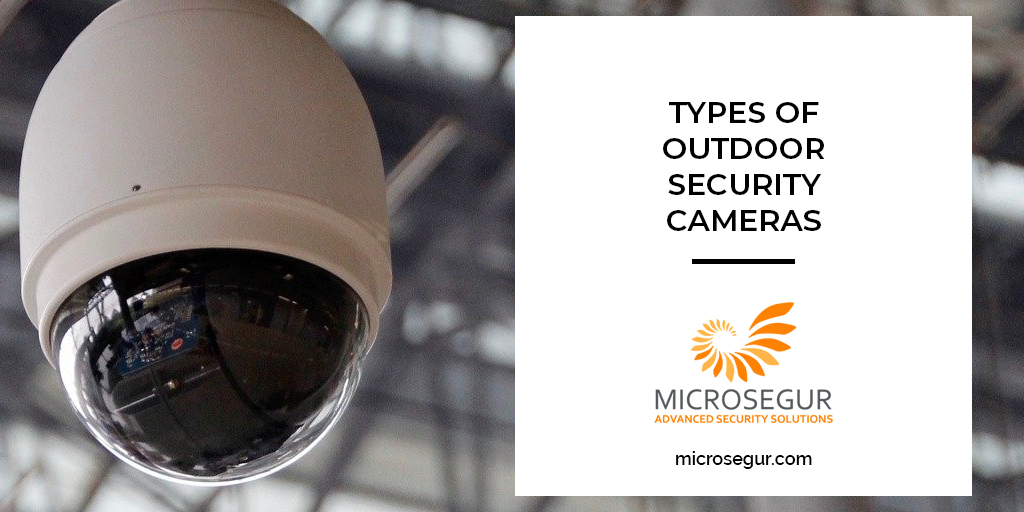The outdoor surveillance of any installation is the first safety wall with which we protect ourselves from intruders. The essential part of this first wall is the different types of exterior surveillance cameras, very important to prevent unwanted intrusions in our property and to anticipate their intentions.
In this post we are going to talk about the different types of security camera, since not all the cameras that are used have the same technical characteristics. Each of these types has its advantages and disadvantages, and we have to make a previous study of what needs have and the characteristics of the building to be protected before deciding to acquire one or the other in our security systems installation project.
Regardless of the camera brands, the first thing we have to choose is the type of surveillance camera. Here we find three categories that we will now analyze carefully: thermal cameras, conventional cameras, and PTZ Dome cameras.
Types of outdoor security cameras
Thermal Cameras
With the thermal cameras we can see the heat radiation emitted by a body. They work regardless of lighting conditions. Thermal cameras are a good option to monitor in low light environments and provide sufficient image resolution so that the guard can identify the alarm in question.
The advantages of thermal cameras are as follows.
- They are suitable for low light situations. This is important in case of large enclosures or isolated facilities where we cannot have an illuminated perimeter. The external lighting does not influence its performance.
- The thermal cameras allow to see between the vegetation both in night and daytime conditions, since the image is formed from the infrared radiation that the bodies give off. We will not be able to see through the vegetation, but we will see the shape of the body behind.

Image Youtube
- Thermal cameras can use camouflage foliage to go more unnoticed and can detect intruders who use bushes to hide, because they will continue to detect the heat emitted by the human body.
- Reduction of false alarms: with thermal cameras it is easy to distinguish the type of intrusion since small and large bodies are very well distinguished and do not give false alarms due to the presence of small animals, for example. Thermal cameras offer better backlights, which facilitates the distinction of the object.
- The investment in this type of cameras gives greater profitability. Its effectiveness and efficiency is highly proven.
- Thermal cameras have a greater range than other cameras and can detect bodies from 200 meters.
The disadvantages of thermal cameras would be two basically.
- By basing image formation on heat emission, what we see is not a real photographic quality image. We have a lower definition which makes it difficult to identify the possible intruder.
- Another important handicap that thermal cameras have is their higher cost. They are not an economic investment and we have to weigh well what our need is before opting for this type of technology.
Conventional Security Cameras
Conventional video surveillance cameras are those that are based on image capture through a normal photography and video lens. What we see is the real image of what is happening, and not an image formed from the infrared radiation emitted as it happens in a thermal camera. Depending on the quality of the lens and the resolution we will obtain more or less sharp images and of a greater or lesser scope.
What are the advantages of Conventional cameras?
- The biggest advantage of a conventional camera is its greater definition, and we talk about the latest high definition technologies that have been incorporated in recent years. What we are seeing and recording is a real and very definite image of what is happening around us.
- Another important advantage is its lower cost, which allows for a good video surveillance project with a tighter investment.

The disadvantages of conventional cameras are:
- Smaller range. They can see miles away, but they are only valid for reliable identification at a distance of about 200 meters.
- They require external lighting for night vision. If we do not have security perimeter lighting these cameras will be completely blind.
- They have a higher energy consumption.
PTZ Dome Cameras
PTZ Dome cameras are cameras that are used both indoors and outdoors. This type of cameras is capable of rotating in a vertical plane (tilt in English) and in a horizontal plane (panning), in addition to zooming in or out manually or automatically (zoom). They can incorporate sensors that automate tracking by heat, sound or movement and allow zooming.
The advantages of PTZ Dome Cameras are:
- These latest technology cameras have greater definition and detail than other cameras. This is very interesting if we want to distinguish and follow for example someone within a group of people.
On the other hand, there are two disadvantages of PTZ Dome cameras.
- These cameras only serve to make a general visualization of a space, but only cover a small part at a given time.
- Due to its greater number of moving parts, its maintenance will be more frequent.
When we face important security projects, we have to do a preliminary engineering study to define well the equipment that best suits us according to the type of installation to be protected and according to the potential threats, choosing the best types of outdoor security cameras. We must entrust the security to companies of an accredited technical solvency and with a long history.




